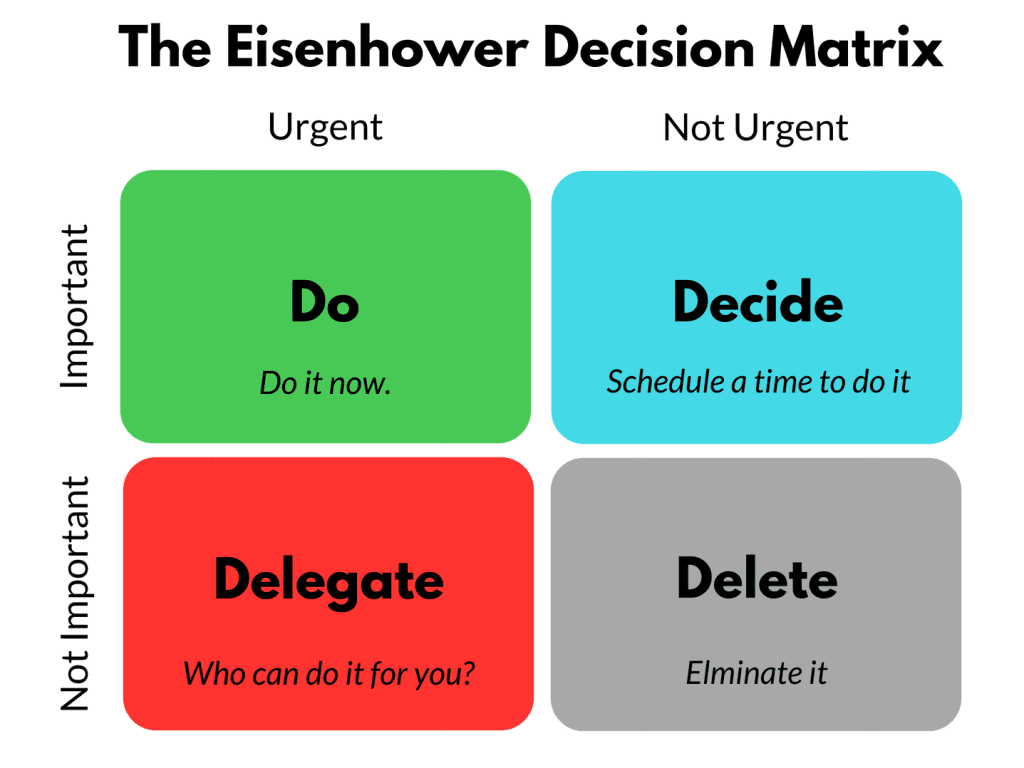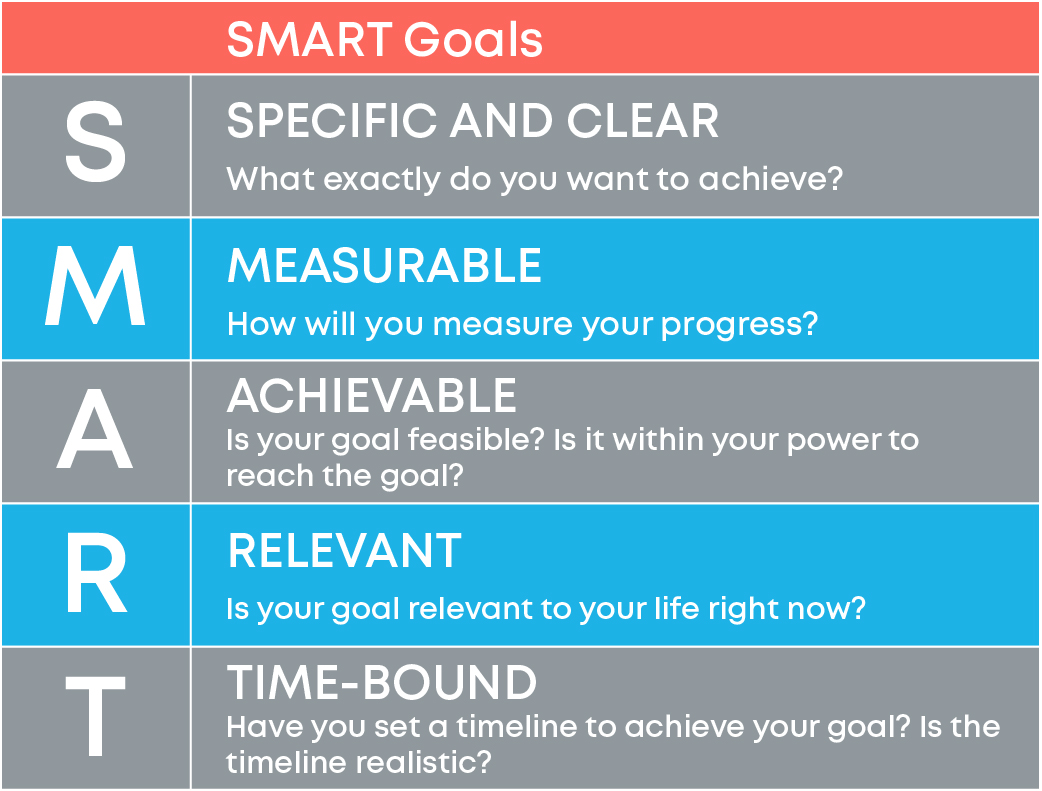How to Be More Productive with Yourself Leave a comment
Imagine a world where each tick of the clock only brings you closer to your goals; where your mind is a well-oiled machine, churning out ideas and solutions with ease. Picture a day when your to-do list seems like a piece of cake, rather than a mountainous chore.
This is the potential power of productivity, the key to unlocking a life of efficiency and accomplishment. However, harnessing this power requires knowledge, understanding, and conscious steps towards improvement.
In the quest to become more productive, many stumble and falter, unsure of the path to take. Picture yourself navigating through a jungle of distractions, procrastination and overwhelming tasks. Each step could make or break your journey towards productivity.
With the right guidance, tools, and mindset, however, this trek becomes less daunting. The jungle turns into a well-trodden path, leading straight to the destination of a more productive self. This article aims to provide that guidance, to illuminate the path towards increased productivity, and to help you become the best version of yourself.
Create a to-Do List
Break down tasks into manageable pieces to avoid becoming overwhelmed. Smaller tasks are less daunting and easier to complete, leading to efficient people with increased productivity. Prioritize the list, focusing on important tasks, and avoiding the trap of toxic productivity.
Remember, it’s not about how much time you spend, but how wisely you use it. Regular time blocking and tracking progress in real-time can help stay focused. Set boundaries and limit distractions to maintain peak productivity during peak hours. Remember, it’s okay to break for lunch time, take a breather, or even enjoy some cuddly animal pictures.
Break Down Tasks Into Manageable Pieces
Imagine an orchestra of tasks, each one playing its part in harmony to create a symphony of success. This is the melody that resonates with efficient people who have mastered the art of breaking tasks into manageable pieces.
Efficient people know that a monumental task can be daunting, much like staring at the peak of a mountain from its base. They understand that the hardest thing is initiating action. Thus, they employ the “Five-Minute Rule”. This rule proposes starting with small goals that can be accomplished in five minutes or less. This approach not only reduces the perceived enormity of the task but also provides a sense of achievement, serving as a productivity tip – motivation in real-time.
Consider a business administration degree, an environmental science degree, a nursing degree, or even a criminology degree. Each of these degrees encompasses many different subjects. Efficient people tackle such multistep demos by breaking them into smaller tasks, each subject becoming a manageable piece of the larger puzzle. They understand the importance of limiting distractions and bad habits that pose as time sinks.
Prioritize Your List
Sailing smoothly into the next crucial step, let’s delve into the art of prioritizing your to-do list. Efficient people know the importance of organizing their duties according to importance and urgency. Imagine a proactive dashboard, shining bright with the most important tasks at the top. This is the essence of a reasonable to-do list.
The Eisenhower Matrix, a renowned tool, can be your ally. It helps in differentiating between the ‘important’ and ‘urgent’ tasks, thereby tackling toxic productivity. Employing tools like these, one can spend much time on significant tasks and less time grappling with trivial matters.

Don’t forget the ‘Five-minute rule’. If a task takes less time, say five minutes or less, do it immediately. Postponing such tasks only leads to clutter and unnecessary stress.
Group similar tasks together to save serious time. Repetitive tasks repetitive tasks can be bundled together and tackled in one go. This is one of the top tips for increasing productivity and reaching your personal and professional goals faster.
Track Your Progress
Transitioning from breaking down tasks into manageable pieces and prioritizing, the journey to productivity bliss moves to the next step – Tracking Progress. A vibrant picture of increasing productivity painted with the colors of accomplishment and success.
To keep less time spent on wondering where one stands, a proactive dashboard serves as an efficient tool. This real-time tracker allows for immediate and relevant updates on progress. With the five-minute rule applied, take time reading through the dashboard – a multistep demo overlay can be an aide. This tool functions best during peak hours to avoid the trap of toxic productivity.
Setting small, manageable goals can make even the most daunting tasks seem less overwhelming. It’s like nibbling away at a task until it’s finished. Plus, seeing the progress of others can give you that extra push you need. But don’t forget, it’s not about who is the most productive, it’s about personal growth and achieving your goals.
Try to minimize interruptions during your prime productivity hours. Clump related tasks together to maximize your time and energy. And don’t forget the pizza rule – if you can accomplish a task quicker than you can get a pizza delivered, then don’t put it off. Go for it right away.
Set Goals
Creating meaningful goals is like setting your GPS for success. To get started, you first need to pinpoint critical tasks that sync with your long-term ambitions. Imagine creating a friendly dashboard that doesn’t just list tasks, but tells a story. It outlines top tasks, related projects, and a manageable to-do list.
With Part II – the mind, we dive into the wonderful world of SMART goals. Here, the focus is on setting mini-goals to sidestep the trap of toxic productivity. The five-minute rule comes into play, making every task seem less daunting and far more achievable.
Just like a fitness tracker, real-time monitoring of these mini-goals helps to break them down into bite-sized, actionable steps.
Identify Your Priorities
Being productive is not solely about accomplishing myriad tasks; it’s also a matter of setting longterm priorities. Identifying these longterm priorities is akin to having a compass in the sea of tasks, guiding towards the most important tasks. It could be gaining a marketing degree, launching a new project, or even achieving small goals daily.
Imagine, for a moment, an individual with a nursing degree switching to an environmental science degree, or a criminologist deciding to open a pizza place. It may seem peculiar to another person, yet if these align with their longterm priorities, they’re on the right path.
Employ the five-minute rule when deciding on priorities. If it takes less than five minutes to do something that aligns with the longterm priorities, do it right away, in real time. Implementing the pizza rule, slice tasks into manageable pieces.
Create Smart Goals
Diving deeper into “Setting Goals”. This journey requires a compass, and SMART goals can serve that purpose. Here are some top tips on creating SMART goals.
Part II – Mind: The key to productivity lies in setting goals that are Specific, Measurable, Achievable, Relevant, and Time-bound. Think of them as the coordinates guiding your productivity ship.
Imagine pursuing a criminology degree. A vague goal might be: “Study more”. But a SMART goal would be: “Read and annotate two chapters from the criminology textbook every week for the next semester”. This goal is specific, measurable, achievable, relevant to your important tasks, and time-bound.

Breaking big goals into small goals can ease the journey. Consider the five-minute rule. If a task can be done in five minutes, do it straight away. This approach can help to keep your tank — recharged and ready for the next task. Remember, SMART goals are the wind in your productivity sails.
Break Goals Into Actionable Steps
Traversing from the realm of to-do lists, we enter the landscape of goal setting. Now, let’s delve into breaking goals into actionable steps, a key aspect of achieving any objective.
Imagine a picturesque path winding its way to a distant mountain peak, each step on the path representing a small, manageable task leading to the summit – the final goal. To break a goal into actionable steps, think of the objective as that peak and each necessary task as a step on the path.
One of the valuable productivity tips includes implementing the five-minute rule. If any step can be accomplished within five minutes, don’t hesitate—do it right away. This simple rule can prevent procrastination and keep the momentum going.
In the spirit of the five-minute rule, also consider breaking down larger tasks into five-minute segments. By chipping away at goals in small increments, the process becomes less overwhelming and more manageable.
Final thoughts? Achieving a goal isn’t a marathon where one powers through in one long burst.
Take Regular Breaks
Consider the fiveminute rule, a friendly reminder to take regular breaks. It enables a refreshing pause, rejuvenating both mind and body. This small gap allows exploration of new ideas, fostering creativity and innovation. Furthermore, these breaks, as per the fiveminute rule, aren’t just about rest; they are about recharging energy levels, refilling the mental well for enhanced focus and vitality. A break isn’t wasted moments but an investment in continued productivity. So, embrace the fiveminute rule, and discover the power of regular breaks.
Refresh Your Mind and Body
Emerging from the realm of setting goals, it becomes crucial to underscore the importance of taking regular breaks to revitalize both the mind and body. The act of giving oneself a pause in between work can significantly enhance mental sharpness and physical wellness.
Imagine a garden teeming with vibrant flowers. Just as these flowers need regular watering to flourish, the mind and body need regular breaks to rejuvenate. This respite allows for the dissolution of stress, thus promoting mental clarity and improved focus. The body, too, thrives on these rest periods, reducing physical tension and fatigue.
Engage in relaxation exercises, such as deep breathing or meditation, during these breaks. This helps to clear the mind and enhance cognitive function. Similarly, consider brief physical exercises, like stretching or walking, to mitigate the physical strain of prolonged sitting. The table below provides a sample schedule for integrating breaks into your day:
| Time | Activity |
|---|---|
| 10:00 AM | Deep Breathing |
| 12:00 PM | Brief Physical Exeercises |
Explore New Ideas
Transitioning from the establishment of objectives, the opportunity to explore new ideas surfaces as an exciting element of taking regular breaks. Embracing the freedom to wander mentally can stimulate creativity and innovative thinking.
Visualize a garden of thoughts, where each break taken is a chance to scatter seeds of curiosity. This unplanned exploration can lead to the discovery of novel concepts and fresh perspectives. Picture a mind-map expanding and branching out, resembling a blossoming flower with each new idea.
A change of scenery can also nurture this process. Imagine a walk in the park, where each step taken under the shade of towering trees and amid the chorus of chirping birds unveils a fresh wave of inspiration.
Breaks are not just about stepping away from work, but also about stepping towards a world of undiscovered ideas.
Recharge Your Energy Levels
Often overlooked, recharging energy levels plays a critical role in maintaining a steady pace in the workday. Think of it as refueling a vehicle for a long journey. Breaks serve as pit stops that replenish the mental and physical stamina, promoting consistent productivity throughout the day. A brief pause from strenuous activities helps renew concentration, enhancing performance upon return.
Consider incorporating activities that rejuvenate the spirit during breaks. A brisk walk outside, for instance, not only allows a change of scenery but also boosts energy and mood. Mindful breathing exercises or a quick yoga session can also serve as an effective energy booster.
Remember, a well-rested mind and body can accomplish wonders. Therefore, never underestimate the power of recharging energy levels.
Manage Your Time
Let’s look at time management with the first step being: estimating the duration of tasks. Visualize each task at hand, and determine how long it might take to complete it.
Then, focus on creating a distraction-free environment. Picture a serene and quiet space, free from interruptions that can hinder progress. Lastly, consider the use of a timer.
Imagine the comforting tick-tock as it guides each second, keeping you on track and promoting a steady rhythm of work. Time management becomes a breeze with these simple yet effective techniques.
Estimate Time Needed for Tasks
It’s essential to understand that estimating the time needed for each task forms the foundation of effective time management. This not only helps in creating a realistic schedule but also aids in reducing stress by avoiding last-minute rushes. Think about each task at hand, consider all the steps involved, and then assign a specific time frame to it.
Firstly, break down larger assignments into manageable chunks, each with its own time estimate. A complex project becomes an art exhibition of smaller, colorful tasks.
Secondly, practice makes perfect. The more frequently an activity is performed, the clearer the understanding of how long it’ll take. A seasoned chef knows that sautéing onions to a golden brown takes approximately 10 minutes.
Finally, documenting past estimates and comparing them to actual time taken can help refine future estimates. This continuous loop of learning and adapting is like a potter at the wheel, shaping clay into a masterpiece of efficiency.
Eliminate Distractions
In the grand orchestra of life, distractions play the role of discordant notes, disrupting the flow of sweet melodies. Unwanted notifications, noisy environments, and irrelevant thoughts can morph into chaotic interruptions, drowning out the rhythm of productivity.
To foster a serene workspace, turn off notifications on digital devices or put them on silent mode. Seek a quiet location or use noise-cancelling headphones if an environment is noisy.
For the mind’s incessant chatter, consider meditation or mindfulness techniques. These can train the brain to focus better, reducing the intrusion of irrelevant thoughts.
Remember, a symphony without discordant notes creates a harmonious tune. Clearing distractions paves the way for a focused, efficient workflow, and an enchanting performance in the orchestra of life.
Use a Timer to Stay on Track
Use a Timer to Stay on Track. The ticking of a chronometer can be a gentle reminder, a motivating metronome that guides the rhythm of productivity.
Imagine a quaint kitchen timer, nestled between a stack of papers and a steaming cup of tea. It’s not just an ordinary kitchen gadget, but a tool to drive focus and discipline. Set it for an interval–say, 25 minutes–and let it tick away. This acts as a countdown to concentrated effort, a race against the clock to complete tasks.
Such a timer becomes a beacon of efficiency and responsibilities. It encourages short bursts of intense concentration, followed by brief periods of rest. This balance can be the key to unlocking a higher level of productivity, without succumbing to burnout.
The gentle ticking of the timer serves as a comforting background tune to your productivity, playing a soft melody that guides your tasks throughout the day.
Eliminate Unnecessary Tasks
Envision prioritizing crucial duties first, eliminating irrelevant clutter, and focusing on what truly matters. Picture the joy of entrusting tasks to others, a shared responsibility like an enjoyable summer picnic.
Visualize the satisfaction of automating monotonous processes, akin to a reliable windmill, tirelessly working, generating power without constant attention. This is the art of eliminating unnecessary tasks, a gentle breeze that ushers in a more organized lifestyle.
Prioritize Essential Tasks
Having a firm grasp on the management of hours opens the door to the next stride in enhancing productivity: The removal of unnecessary tasks from the to-do list. The initial step in this direction requires focusing on essential tasks first.
Just like in the world of getting things done, the key tasks are the building blocks. Think of putting these tasks first as setting down the first piece in your jigsaw puzzle. It’s a fun and unique way to visualize productivity!
When the essential tasks are addressed first, it creates a solid base for the rest of the day. This way, even if minor tasks fall by the wayside, the overall productivity doesn’t get hampered. It’s about focusing on the tasks that make a genuine difference, not just those that fill up the day. See sample below
| Steps to Prioritize Essential Tasks |
|---|
| 1. Identify the tasks that align with overarching goals |
| 2. Determine which tasks are truly important. |
Delegate Tasks
Delegation is an art in itself. Delegating tasks is sharing a part of your responsibility with others. It’s like passing on a baton in a relay race, where each team member plays a crucial role in reaching the finish line. Delegation not only helps in task distribution but also aids in fostering a collaborative work environment.
The beauty of delegation arises from its dual benefits—it not only lightens your workload, but also empowers team members. Hand over responsibilities that can be capably handled by others. This could be anything from preparing reports, managing meetings, to even overseeing minor projects.
Delegation, though, is not about shirking responsibilities. It’s about identifying capabilities and assigning tasks accordingly. It’s about trust, collaboration and growth.
By delegating a task, you’re providing an opportunity for someone to learn, develop, and prove their skills. It’s a win-win, where tasks get accomplished, and team members get to flourish.
Remember, a conductor doesn’t play all the instruments—they guide each musician to play their part to perfection.
Automate Repetitive Processes
Having understood how significant it is to manage hours effectively, let’s now delve into a critical practice – eliminating unnecessary tasks. In this section, we’ll focus on the automation of repetitive processes.
Consider those mundane tasks that seem to consume your day. Maybe it’s data entry or responding to common customer inquiries. Automating these repetitive processes can work wonders in liberating your schedule for more pressing matters. It’s like having a diligent assistant who never gets tired, never asks for a break, and never makes a mistake because of fatigue.

With a vast array of automation tools available, you can set up systems that handle these tasks without your constant supervision. From email responses to social media posts and even data analysis – automation has a lot to offer. It’s like weaving a magic spell that keeps your work humming along smoothly while you focus on the tasks that truly require your expertise.
In essence, automating repetitive tasks empowers you to work smarter, not harder. So, give it a try and see what a difference it makes in your workday.
Track Your Activities
Constantly identify activities that consume excess periods of attention. Analyze personal routines, habits and behaviors, looking for patterns that might hinder progression. Once these patterns are identified, a friendly reassessment of the daily schedule might be required.
Make necessary adjustments, always keeping the balance between professional responsibilities and personal fulfillment. Remember, the goal is not just to be busy, but to make every moment count.
Identify Time Wasters
As we bid farewell to unnecessary tasks, let’s embark on identify those sneaky time wasters. Think of it as a treasure hunt, but instead of searching for gold, we’re hunting down those elusive activities that devour precious hours without giving anything substantial in return.
Start by taking a close look at your daily activities. Are there any tasks that seem to take an extravagant amount of time yet yield little to no value? Perhaps frequent social media scrolling, insatiate-watching television shows, or even over-organizing your workspace? These activities, while seemingly harmless, can quickly add up to a significant chunk of the day, stealthily stealing away productive hours.
Remember, it’s not about eliminating every single leisure activity. It’s about recognizing which ones consume a disproportionate amount of your day. So, grab your detective hat, and let’s uncover those elusive time wasters!
Analyze Your Habits
Now let’s focus on analyzing daily habits. First, identify the routines and patterns that guide everyday actions. Are there moments in the day spent staring blankly at the computer screen, or perhaps periods where social media scrolling becomes a black hole?
Highlight these instances, not to instill guilt, but to shine a light on areas for improvement. Assess the frequency of these moments, their duration, and the triggers that lead to them. Is it boredom, procrastination, or a lack of direction that pulls focus away from more meaningful endeavors?
Now, consider the tasks and activities that bring joy, ignite creativity, and lead to a sense of accomplishment. Recognize these positive patterns and find ways to incorporate them more into the day. Remember, analyzing habits is not about blame; it’s about understanding the reality of the day and finding ways to make it even better.
Adjust Your Schedule as Needed
Fine-tuning daily routines can make a significant difference in how our days unfold. Tweaking the schedule as required forms an essential part of achieving a productive day.
Staring at the clock, waiting for the day to end, isn’t the most fruitful way to spend a day. Instead, consider adjusting the schedule based on the activities that consume the most duration. This approach ensures effective use of the day, leaving no room for unproductive hours.
For instance, if mornings are filled with a burst of energy, schedule the most demanding tasks for that time. On the flip side, if the mind feels more active and creative during the twilight hours, reserve those for brainstorming and genesis of new ideas.
Don’t forget to slot in breaks. They are crucial for the mind and body to rejuvenate and get ready for the next round of activities.
Adapting the schedule according to personal rhythm and energy flow can work wonders in enhancing productivity.
Get Enough Sleep
Imagine a sanctuary of calm, where slumber is not only welcomed but prioritized. Then, think of a soothing rhythm of rest, a sleep routine that’s as consistent as the ebb and flow of the ocean tides.
Lastly, visualize a world where healthy habits aren’t burdens but lifelines, providing the nourishment needed to maintain this balance. Remember, sleep isn’t a luxury, but a necessity that requires care, consistency, and commitment.
Prioritize Rest
It’s essential to prioritize rest, as it’s a critical component of a balanced lifestyle. The hustle and bustle of daily life can sometimes trick the mind into thinking that sleep is a luxury, not a necessity.
However, embracing a mindset that values rest as a vital part of maintaining efficiency can lead to a healthier, more productive life. Think of it as a rechargeable battery that powers the mind and body. Without sufficient recharging, the battery’s performance dwindles. Similarly, without adequate rest, the mind’s performance suffers.
Avoid sacrificing sleep for more work hours. While it might seem like a win in the short term, it can lead to burnout in the long run. Therefore, drawing a clear line between work and rest periods allows for an optimal balance between productivity and relaxation. Encourage a culture that values sleep, as it is the secret to a refreshed and rejuvenated mind, ready to tackle challenges with renewed energy.

Establish a Sleep Routine
The night’s cloak brings not just an end to the day’s toil, but a fresh start awaiting in the warm embrace of slumber. Thus, we arrive at the need to establish a sleep routine.
Set a fixed schedule for turning in and waking up, even on weekends. This sets the body’s internal clock, aiding in falling asleep and waking up more naturally.
In the hour leading to your bedtime, engage in calming activities. This could mean reading a book, or perhaps a gentle dance with the notes of a soothing symphony. Keep your gadgets aside, their radiant light is an unwanted guest in your peaceful sanctuary. Rather, allow the soft murmur of your breathing to lead you into the realm of dreams. Then as morning sunbeams peek through the curtains, rise with them.
Maintain Healthy Habits
Embracing a wholesome lifestyle plays a vital role in optimizing sleep quality. A balanced diet, filled with vitamins, minerals, and other nutrients, nourishes the body and aids in achieving sound sleep. Regular physical exercise, be it a brisk walk in the park or an intense workout session at the gym, boosts the body’s overall functionality and improves sleep quality.
The use of electronic gadgets before bedtime should be minimized, as the blue light emitted by screens can disrupt the body’s natural sleep cycle. Instead, consider reading a book or practicing light meditation.
Moreover, staying hydrated throughout the day and avoiding excessive intake of caffeine and alcohol are key to promoting healthy sleep patterns.
Stay Motivated
Bask in the joy of achievements, no matter how small. Celebrating these triumphs creates a sphere of positive vibes, which in turn, propels the motivation to keep going. Next, establish practical expectations.
This prevents feelings of defeat while fostering a sense of accomplishment as each attainable target is met. Lastly, discover joy in the journey itself. Finding pleasure in the process rather than just the end result keeps the spark of motivation alive, transforming the path to success into an enjoyable adventure.
Celebrate Accomplishments
One crucial element in keeping motivated is acknowledging and celebrating our achievements. Imagine the euphoria of crossing the finish line after a grueling marathon. That’s what it feels like to celebrate a finished task.
It’s the sweet taste of victory, the pat on the back after a long day, the radiant smile when the puzzle pieces finally align. The act of celebrating accomplishments, no matter how small, provides a delightful boost of motivation.
The simple act of ticking off a task on a to-do list can bring immense satisfaction. It’s the silent applause in the theater of productivity, the standing ovation in the opera of efficiency. It’s the triumphant cheer that echoes in the quiet corners of a mundane day.
Acknowledging finished tasks not only fuels motivation but also carves a positive loop of productivity. It’s the kindling that sparks the flame of motivation and keeps it burning bright.
Set Reasonable Expectations
Setting reasonable expectations forms yet another foundation of staying motivated. Take gardening for instance. With a well-thought-out plan, the gerdener does not plant a seed expecting a full bloom the next day. Instead, the gardener understand the natural process of growth and set their expectations accordingly. The gardener knows that nurturing the seed with water and sunlight over a period of time will eventually yield a beautiful flower.
The same principle applies to productivity. Envisioning an entire project completed in a single day may lead to disappointment and demotivation. Setting realistic expectations about what can be accomplished in a given period is more beneficial. Consider breaking down larger projects into manageable segments. This approach can help to maintain enthusiasm and a sense of achievement throughout the process.
Remember, Rome wasn’t built in a day. By setting reasonable expectations, every small step becomes a satisfying stride towards the end goal.
Find Ways to Enjoy the Process
Just as a well-rested mind functions optimally, adding a dash of enjoyment into the daily grind can surprisingly turn any mundane task into a delightful experience. The key lies in finding ways to enjoy the process.

Imagine a day filled with laughter, excitement, and a sense of accomplishment. Now, picture this happening every day. This isn’t a farfetched daydream, but a reachable reality. The secret? Spice up the day-to-day tasks. A dash of joy can transform any monotonous task into an enjoyable journey.
Inject some fun into the process. If the task is a lengthy report, why not turn it into a storytelling session? If it’s cleaning the workspace, how about making it a challenge – a race against the clock perhaps? Or, if it’s a brainstorming session, consider transforming it into a friendly competition. No task is too dull to be spruced up with a sprinkling of enjoyment.
Conclusion
Creating an organized plan, setting objectives, and methodically eliminating superfluous duties allows for a more orderly and productive lifestyle. The importance of tracking undertakings, ensuring ample rest, and maintaining a commitment to personal development cannot be overstated.
Staying motivated is not just about achieving goals, but also about enjoying the journey. The road to self-improvement and higher productivity is paved with discipline, focus, and a healthy mindset. It’s not about working harder; it’s about working smarter. A productive life awaits those who adopt these practices with a smile.






